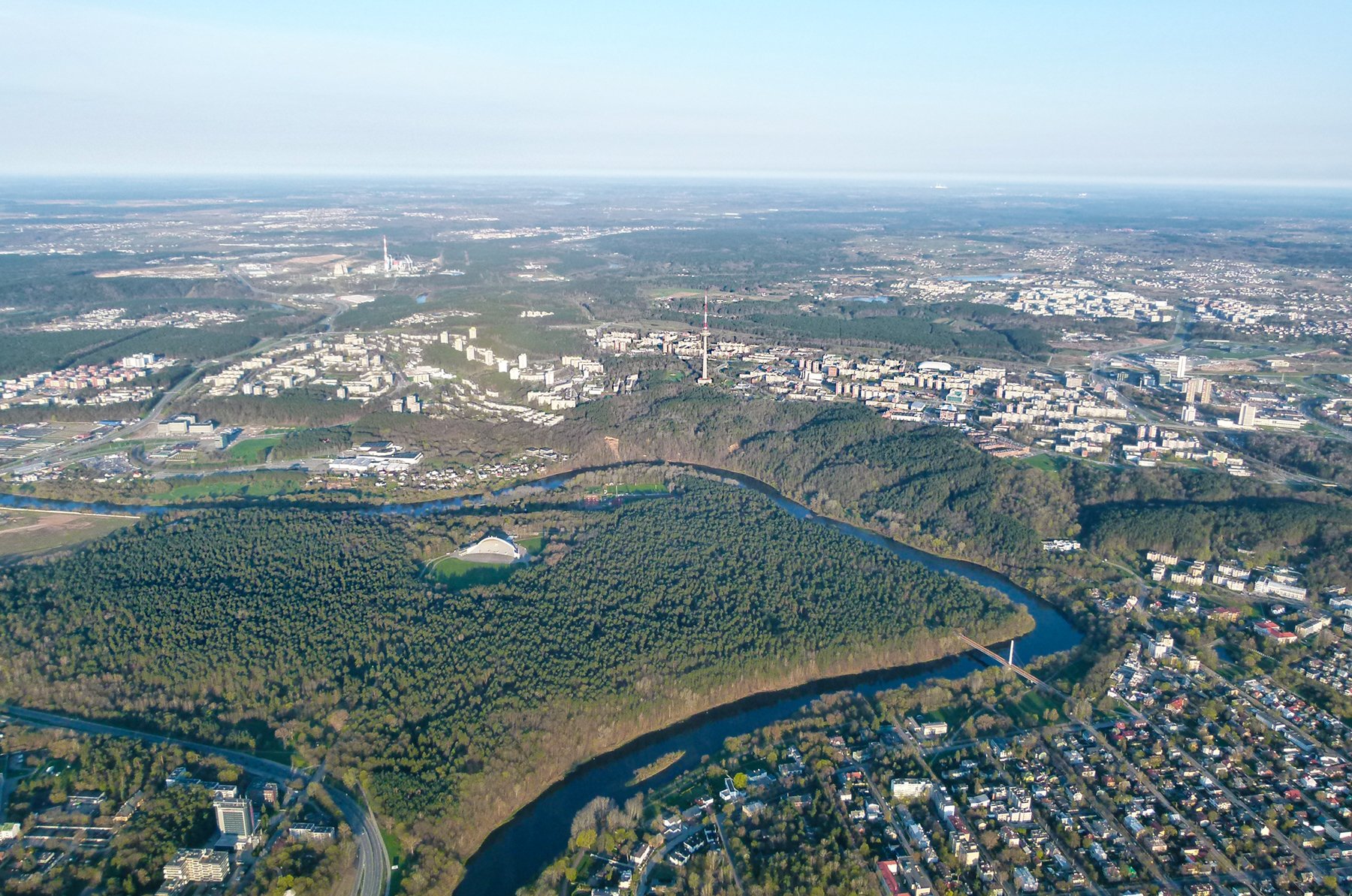Vilnius. Part I
Setting up the stage, centre: Vilnius Cathedral, square and the Bell Tower. Gediminas’ Tower on the hill & River Neris as seen from a hot air balloon.
Some interesting facts about Vilnius
Vilnius was founded by grand duke Gediminas and was first mentioned in his letters to the Holy Roman Empire as the capital of Lithuania in 1323. In his letters, he invited merchants, trade- and craftsmen to come to the Grand Duchy and practice their trade and faith without any restrictions and granted generous tax exemptions.
Vilnius is situated in the confluence of the Vilnia and Neris rivers and has a remarkable landscape: meandering rivers surrounded by hills, parks and woodlands.
The extensive and well-preserved Vilnius Old Town is a UNESCO World Heritage Site since 1994, and is easily explored on foot. Vilnius is also designated as UNESCO City of Literature since 2015.
Vilnius’ coat of arms features Saint Christopher, the patron saint of travellers. An early good omen…
There is no need for navigation in Vilnius.
Vilnius is situated in Northern Europe according to the UN; geographically – in the centre of Europe (as determined by Jean-George Affholder, French National Geographic Institute, 1989). Culturally – in Central Europe. These influences have formed a surprisingly diverse and unique culture (and cuisine).
There is a separate Republic of Užupis (the name means “over the river”) in Vilnius, a Bohemian quarter. It could be compared to a Christiania freetown in Copenhagen or Montmartre. Užupis declared itself a separate republic on the 1st of April 1998. It has its own government and even a constitution, which has been translated into more than 40 languages and counting.
The Republic of Užupis Constitution: a funny find, the Dutch translators added a specific culinary reference to the base text of the Constitution, Nr. 9 reads: “Iedereen heeft het recht om lui te zijn en stroopwafels te eten”, which translates to: “Everyone has the right to be lazy and to eat stroopwafels”, a typical Dutch wafer waffle.
Lithuania was the first country to declare independence from the USSR on the 11th of March 1990 in Vilnius; joined the EU on the 1st of May 2004; and has the Euro as its currency since 2015.
#1 – Global ranking of Vilnius in Tech Startups FDI Attraction Index. Some of Vilnius’ startups: marketplaces (Vinted, CGTrader, Ovoko); cybersecurity (NordVPN); fintech (TransferGo, Ondato, Revolut EU headquarters); gaming (Nordcurrent, Game Insight, Wargaming); mobility (Trafi, ZITICITY); biotechnology (Biomatter Designs, Droplet Genomics); space (NanoAvionics); health tech (Kilo Health, Oxipit); education (Turing College, Aeroclass); entertainment (BoredPanda); and is especially advanced in the laser industry.
Vilnius is the only EU capital that allows hot air balloon flights above its city centre; the balloons launch just minutes from the Old Town.
River Neris and the White pedestrian Bridge; to the top left, the National Art Gallery and 200 blossoming Japanese Sakura planted in Vilnius to commemorate the 100th anniversary of Japanese Diplomat Chiune Sugihara.
FYI, Art Lovers: Vilnius has a very active cultural life. Last Sunday of every month – free entrance to all the Lithuanian National Museum of Art Collections: Vilnius Picture Gallery, National Gallery of Art, Radvila Palace Museum of Art, Museum of Applied Arts and Design, The Lithuanian Diaspora Art Museum. I also recommend visiting MO Museum, Contemporary Art Centre, Vilnius City Hall as well as dozens of other museums and art galleries across the city, as there are always new and interesting exhibitions.
Vingis Park, in a curve of the Neris River, is located in the middle of the city. The amphitheatre is an important venue for concerts, the Lithuanian Song Festival, political rallies and mass events.
Lithuanian is a Baltic language; it is written in a Latin script, and it has 32 letters; it belongs to the Indo-European language family. It is the official language of Lithuania and one of the official languages of the European Union. Probably the most conservative of the existing Indo-European languages, retaining features of the Proto-Indo-European language now lost in other languages. Lithuanian language can be studied at the Vilnius University (est. 1579, the oldest university in the Baltic States and one of the oldest in Northern Europe).
A fun fact: the Gediminas' Tower is the remaining part of the Upper Castle in Vilnius; in the early 1900s there was a small café on the first floor and its walls were covered with an ornate wall paper. The café was very popular with local couples who’d climb the steep hill and sit in the artillery alcoves (can’t fault the views). The second floor of the tower, was inhabited by mountain guards, artillery and firefighters.



